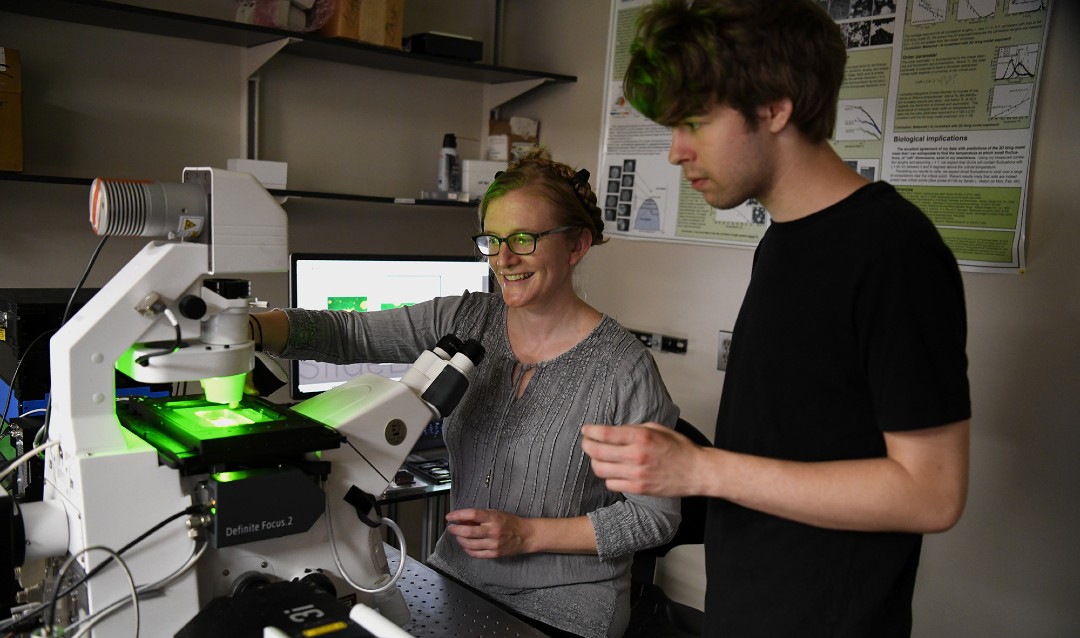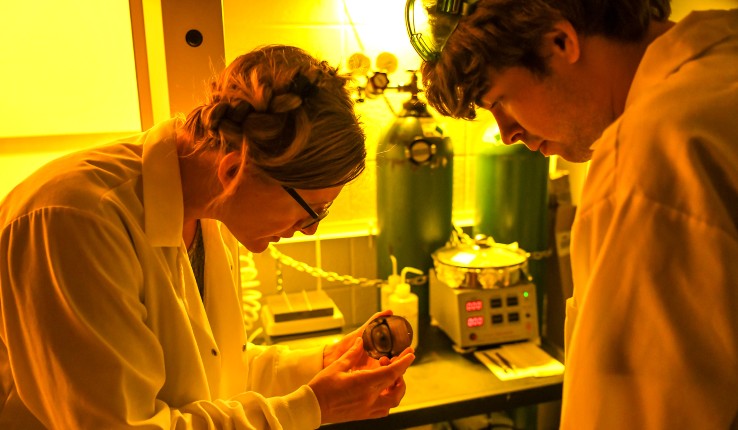Two Lehigh researchers have been awarded a five-year, $1.5 million grant from the National Institutes of Health to examine lipid membranes and the method in which lipids and proteins travel in response to fluid flow. Aurelia Honerkamp-Smith, assistant professor of physics, and Damien Thévenin, associate professor of chemistry, also will test whether flow transport of a membrane protein triggers intracellular signaling in endothelial cells
In blood vessels, the manner in which cells flow through their environment regulates processes such as blood pressure, bone density, and neural growth. Yet, the molecular factors behind flow mechanotransduction, the processes through which cells sense and respond to mechanical stimuli by converting them to biochemical signals, remain unclear.
Endothelial cells are found on the inside of blood vessels, and the team is interested in a specific response these cells have to flow. Honerkamp-Smith and Thévenin are investigating a process that occurs when these cells feel a flow. They hope to identify the fundamental properties and principles that govern flow transport of membrane-linked proteins in model membranes and develop a model that predicts protein motion in physiological situations. When endothelial cells feel flow, they quickly start to produce nitrous oxide. The project will explore how the flow-mediated lateral transport of glypican-1 initiates this short-term flow response in endothelial cells. The researchers will also consider how lipid sorting by flow contributes to flow signaling in their model system and living cell membranes.
The interesting thing about glypican is that it is also located on the outside of the cell, and it is unknown how it activates the nitrous oxide synthase, which is on the inside, says Honerkamp-Smith. She theorizes that physiologically significant protein and lipid concentration gradients arise from physical interactions between fluid flow and complex membranes. This hypothesis is based on the premise that extracellular lipid-anchored proteins such as glypican-1 can be transported along the plasma membrane by external flow, with the aqueous portion of the protein acting as a molecular sail.






